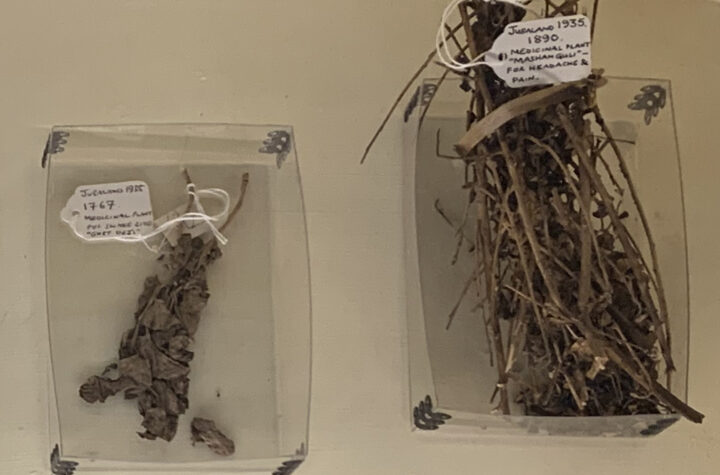
On Friday 11th March I was lucky to be able to attend the first workshop of the People and Plants project.
The workshop brought together a mixture of museum professionals, botanists, researchers, Somali diaspora women, and Powell-Cotton collections and gardening staff to look at the ethno-botanical specimens collected by Diana Powell-Cotton during her trip to Somalia in 1934-5.
The later part of this trip is one of the case studies for my Headley Fellowship project, so it was an excellent opportunity for me to get to know a bit more about the collections and the different ways that people engage with them.
It was also a chance to hear from Abira Hussein, a producer and researcher whose work I have long admired. Her Nomad project is one of the most interesting uses of augmented reality with museum objects that I have seen, and she was part of the British Museum Object Journeys project which first brought Diana Powell-Cotton’s photographs to wider attention (and in doing so partly inspired my own project). Abira talked about her experiences of encountering fragments of Somali cultural heritage in British archives, which often raise more questions than they answer, and how to navigate the gaps in records of such material. She referred to Saidiya Hartman’s Venus in Two Acts, in which Hartman discusses the ‘scraps’ and ‘traces’ of Black lives in historical archives, and suggests ways of working both with and against the archive. I am aware as I begin this project that I am attempting to work ‘with’ the archive, but I hope to facilitate others who may want to work ‘against’ it.
One of the interesting aspects about the collection is that it was collected by a woman, Diana, and focusses largely on female reproductive health and the botanical remedies and supplements used by women in the areas she visited. The relationship between Diana and the people she collected from is complicated by the fact that her interpreter was a man – in discussions the group wondered whether he would have been able to give Diana the correct information, or whether there were things that the women would not have been willing to share, either with a white woman, or through a male interpreter. This was another reminder at the start of my own project about the trustworthiness of the historical record.